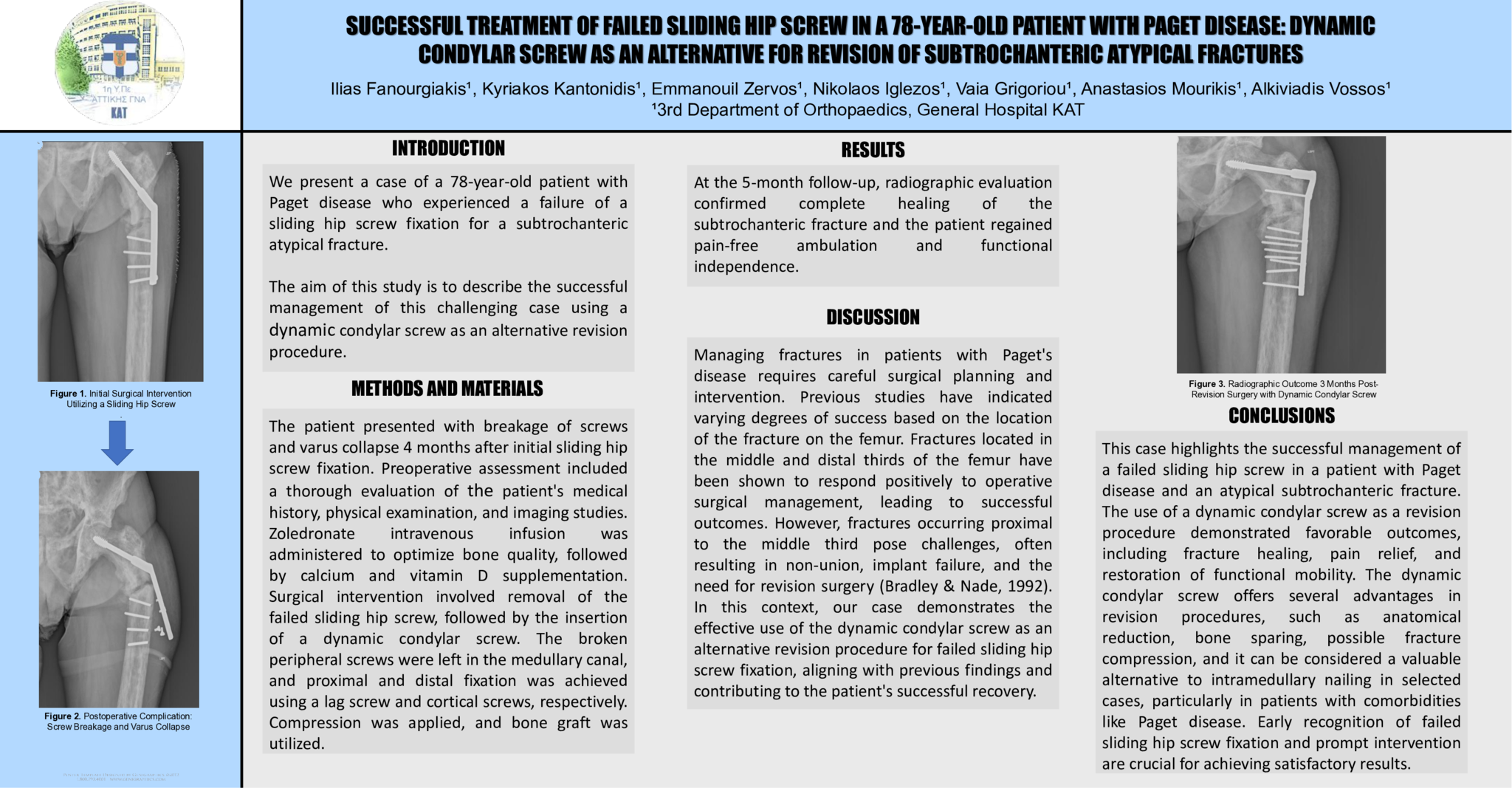Introduction: We present a case of a 78-year-old patient with Paget disease who experienced a failure of a sliding hip screw fixation for a subtrochanteric atypical fracture.
Aim of the Study: The aim of this study is to describe the successful management of this challenging case using a dynamic condylar screw as an alternative revision procedure.
Materials & Methods: The patient presented with breakage of screws and varus collapse 4 months after initial sliding hip screw fixation. Preoperative assessment included a thorough evaluation of the patient's medical history, physical examination, and imaging studies. Zoledronate intravenous infusion was administered to optimize bone quality, followed by calcium and vitamin D supplementation. Surgical intervention involved removal of the failed sliding hip screw, followed by the insertion of a dynamic condylar screw. The broken peripheral screws were left in the medullary canal, and proximal and distal fixation was achieved using a lag screw and cortical screws, respectively. Compression was applied, and bone graft was utilized.
Results: At the 5-month follow-up, radiographic evaluation confirmed complete healing of the subtrochanteric fracture and the patient regained pain-free ambulation and functional independence.
Conclusion: This case highlights the successful management of a failed sliding hip screw in a patient with Paget disease and an atypical subtrochanteric fracture. The use of a dynamic condylar screw as a revision procedure demonstrated favorable outcomes, including fracture healing, pain relief, and restoration of functional mobility. The dynamic condylar screw offers several advantages in revision procedures, such as anatomical reduction, bone sparing, possible fracture compression, and it can be considered a valuable alternative to intramedullary nailing in selected cases, particularly in patients with comorbidities like Paget disease. Early recognition of failed sliding hip screw fixation and prompt intervention are crucial for achieving satisfactory results.
- 9 προβολές




